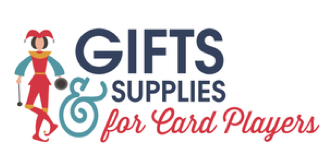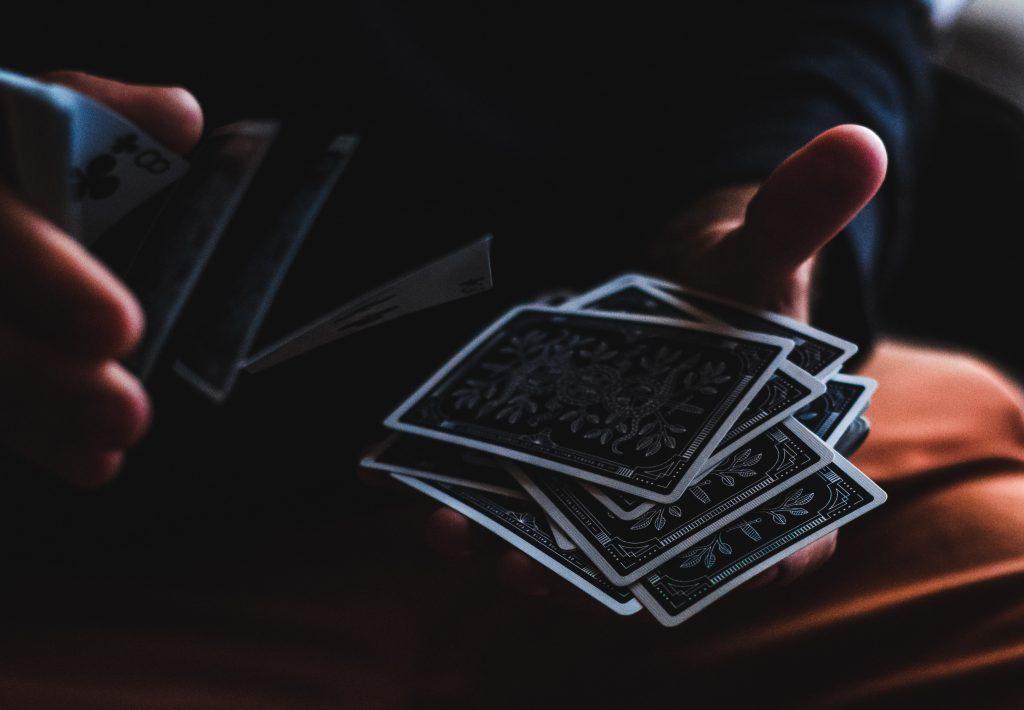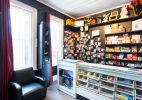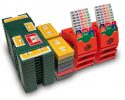Behind the Illusion: How Magicians Use Marked Playing Cards for Magic
Welcome, fellow card enthusiasts, to a mystical journey through the secret world of playing cards, in particular, those used in magic. Have you ever wondered how magicians alter playing card decks in order to create some of the amazing illusions we see at magic shows and on youtube? We know they must do it, but exactly what is involved? Let’s dig in!
There are many ways to alter a deck, and we’ve discovered the top five are:
Marked Cards – These special decks feature subtle markings that only the magician can decipher.
Gaffed Cards – These cards have unique properties not found in a regular deck.
Svengali Deck – This deck features alternating cards of different lengths, creating an illusion of randomness.
Stripper Deck – The stripper deck typically has tapered edges allowing Magicians to secretly control chosen cards with a simple touch.
Forcing Decks – With these decks, magicians ensure that a specific card is chosen, even when it appears to be a genuine selection.
In this article, let’s explore the Marked Deck. But before you read on, you might be suddenly inspired to play some online casiono games – you can find some easy access games at https://noaccountcasinos.io/
Types of Marked Decks
Marked decks come in various types, each with its own method of marking cards. Here are a few different types of marked decks.
Reader Marked Deck: In a reader marked deck, tiny markings are subtly added to the back of each card. These markings can be numbers, symbols, or even tiny variations in the card’s design that are invisible to the audience but easily identifiable to the magician.
Stripper Deck: A stripper deck is specially prepared so that the magician can easily strip out or locate certain cards from the deck. It allows for various tricks involving controlling or finding specific cards with minimal effort.
One-Way Deck: In a one-way deck, all the cards are subtly marked to indicate their orientation. This can be useful for tricks that involve revealing whether a card is face up or face down. A simple example of a one-way deck is one with photos or design on their backs that make it obvious if the card is upside down or right way up. I used this kind of deck many times when I was young, fooling my friends with simple tricks that started with all the cards sorted right way up.
Blockout Deck: Blockout decks have certain sections of the cards blocked out or shaded, making it possible to identify the card from the back, even from a distance.
Marked Tactile Deck: Some marked decks incorporate tactile markings, allowing the magician to identify cards through touch rather than sight. This is especially useful for visually impaired magicians.
Juice Deck: In a juice deck, the markings are typically invisible to the naked eye and can only be seen with the use of special lenses or glasses. These decks are often used in professional gambling cheating methods.
Ultimate Marked Deck: These decks employ highly sophisticated marking systems that may involve a combination of symbols, numbers, and colors. They are designed to be extremely difficult for anyone but the magician to decipher.
Barcode Deck: A barcode deck uses tiny barcodes on the edges of the cards. When scanned with a special device, the magician can instantly identify the card.
Of course that the use of marked decks in magic should always be for entertainment purposes and not for cheating in card games. Magicians spend years perfecting their skills and mastering these tools to create astonishing illusions for audiences.
History of the Marked Deck
Marked cards can be traced as far back as the Ming Dynasty in China, during the 14th century. Chinese gamblers used ink markings on paper playing cards to give them an edge in card games. However, these early markings were relatively crude compared to the sophisticated systems we have today.
The use of marked cards spread to Europe, where they became a tool of both magicians and cheats. In the 16th century, French magician Jean Eugène Robert-Houdin is often credited with popularizing marked decks among magicians. He used them to perform incredible feats of card magic.
As card games and magic evolved, so did the methods of marking cards. Early markings were simple, often consisting of small dots or scratches (see Nail Nicking below). Over time, more intricate and subtle marking systems emerged. Some magicians and cheats used variations in card backs, tiny variations in card designs, or even tiny punched holes to distinguish cards.
In the 19th century, magicians and gamblers began using reader systems to secretly decipher markings on the cards. These systems required in-depth knowledge of the deck and allowed performers to identify cards with precision.
Throughout history, renowned magicians like Dai Vernon and Erdnase contributed to the art of marked card magic. Vernon’s “Ultimate Card Shark” routine is a classic example of using marked cards for magical effects.
In recent decades, marked decks have become highly sophisticated, with intricate systems of symbols, numbers, and colors. These decks are designed to be virtually undetectable to anyone but the magician, even under close scrutiny.
Today, marked decks continue to be an essential tool for magicians, mentalists, and cardicians, allowing them to create astonishing illusions and mind-boggling effects. While their history is rooted in both entertainment and deception, marked decks are now celebrated for their role in the world of magic, captivating audiences worldwide with their mystifying tricks and illusions.
Gambling with Marked Decks
Marked decks have been used in gambling, often in less-than-savory circumstances. In the world of gambling, marked decks are sometimes employed by cheaters looking for an unfair advantage. These marked decks can take various forms:
Blockout Decks: In blockout decks, certain markings on the back of the cards are obscured or altered in a way that only the cheater can discern. This gives them an advantage in games like poker, allowing them to identify valuable cards.
Reader Systems: Some cheaters use special devices or contact lenses to read hidden markings on the cards. These markings can indicate the card’s rank or suit, providing crucial information during the game.
Nail Nicking: A more primitive method involves creating tiny nicks or scratches on the edges of the cards. These marks are often only visible under certain lighting conditions or when the cards are held at a specific angle.
Magical Variations
Marked decks continue to be a staple in magic performances, with variations designed for specific tricks or routines. For instance, the Boris Wild marked deck is known for its clever design that allows magicians to determine both the card’s suit and its position in the deck. This deck is commonly used in card magic routines.
Marked decks have a rich history in both the world of magic and, unfortunately, in the realm of gambling scams. While they serve as powerful tools for magicians to create stunning illusions they have also been misused for dishonest gain. As with any tool, the ethics and intentions of the user determine whether marked decks are employed for entertainment or deception.
Shopping for a marked deck
If you’d like to find out more about card magic, and magical decks, be sure to visit the Ellusionist which clalims to be Home of the World’s Finest Magic Tricks, Tutorials and Playing Cards. This is one of our favourite sites and well worth a visit.
Another popular website for magic tricks including magic decks is Penguin Magic.
And of course, you can always find magic decks on Amazon through our affiliate link here.





